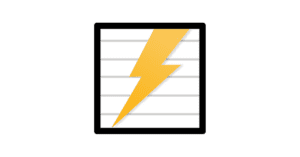In academic writing, choosing between words and numerals for numbers can be tricky. While there are general rules, different style guides (like APA, MLA, and Chicago) have their own recommendations. Below is a comprehensive guide to help you decide whether to use words or numerals, ensuring your writing remains clear and professional.
1. General Rule: Numbers Under Ten
As a general convention, spell out numbers one through nine and use numerals for 10 and above.
• Example: Three students participated in the study.
• Example: The sample size was 15.
This rule helps maintain consistency and readability, but there are exceptions based on context and style guidelines.
2. When to Spell Out Numbers
Use words for:
• Beginning a sentence:
Twenty participants were interviewed.
(However, avoid starting sentences with large numbers. Instead, rephrase: The study included 150 participants.)
• Common fractions:
One-half of the respondents agreed.
• Simple ordinal numbers:
The first chapter introduces the topic.
• Numbers under 10 in non-technical contexts:
She brought seven books to class.
3. When to Use Numerals
Use numerals for:
• Scientific or technical writing:
The temperature reached 25°C.
The dosage was 5 mg per day.
• Time and dates:
The event is scheduled for 3:00 PM.
The study took place on October 23, 2024.
• Percentages and decimals:
The results showed a 7.5% increase in performance.
• Exact measurements and statistics:
The box weighed 8.6 kilograms.
• Large numbers (above 10):
There were 25 participants in the survey.
4. Style Guide Differences
Each academic discipline may follow a specific style guide with unique rules:
• APA Style (7th Edition)
• Use numerals for numbers 10 and above, and for measurements, time, and dates.
• Spell out numbers under 10, unless they appear with a unit (e.g., 5 kg).
• MLA Style
• Spell out numbers that can be written in one or two words (e.g., twenty-four).
• Use numerals for dates, percentages, and statistics.
• Chicago Style
• Spell out numbers below 100, but use numerals for exact data.
• Dates, time, and technical measurements should always appear as numerals.
5. Consistency Matters
In academic writing, consistency is crucial. If a section involves many numbers, it’s better to use numerals throughout to avoid confusing the reader. For example:
• The experiment included 5 men, 7 women, and 12 children.
Switching between words and numerals within the same sentence or paragraph can disrupt the flow.
6. Special Cases to Consider
• Multiple numbers in a sentence: When a sentence contains both small and large numbers, use numerals for all to maintain clarity.
There were 5 teachers and 15 students in the class.
• Numbers in ranges: Use numerals for ranges, even if the numbers are small.
The event will be held from 3 to 5 PM.
7. Conclusion
Mastering the use of numbers in academic writing involves knowing when to use words and when to stick with numerals. Always follow your discipline’s specific style guide, and when in doubt, choose clarity and consistency. If you’re working on a paper or thesis, double-check for formatting issues to ensure professionalism.
By applying these rules, you’ll communicate numerical information clearly, avoiding confusion and ensuring your academic writing stands out.






